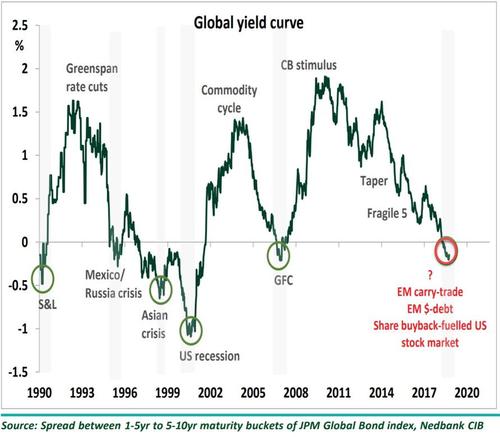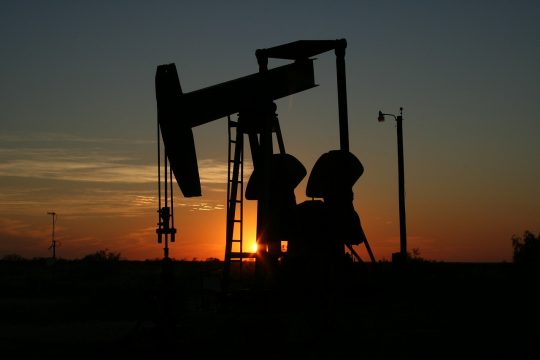 As the chaotic events of 2020 have unfolded, large numbers of young people have moved back in with their parents, and this has pushed the percentage of Americans in the 18 to 29-year-old age bracket that live with their parents to the highest level ever recorded. Without a doubt, the collapse of the economy has hit young adults particularly hard. About 59 million Americans have filed for unemployment over the past 24 weeks, and low wage workers have been disproportionally affected by this tsunami of job losses. Needless to say, young adults traditionally make up a large chunk of our low wage workers, and now that really tough times have hit a lot of them are being forced to fall back on their mothers and their fathers for support. According to a brand new report that was just put out by the Pew Research Center, 52 percent of all young adults in this country are now living with their parents…
As the chaotic events of 2020 have unfolded, large numbers of young people have moved back in with their parents, and this has pushed the percentage of Americans in the 18 to 29-year-old age bracket that live with their parents to the highest level ever recorded. Without a doubt, the collapse of the economy has hit young adults particularly hard. About 59 million Americans have filed for unemployment over the past 24 weeks, and low wage workers have been disproportionally affected by this tsunami of job losses. Needless to say, young adults traditionally make up a large chunk of our low wage workers, and now that really tough times have hit a lot of them are being forced to fall back on their mothers and their fathers for support. According to a brand new report that was just put out by the Pew Research Center, 52 percent of all young adults in this country are now living with their parents…
A new report by the Pew Research Center found that a majority of young adults — 52% — lived with one or both of their parents in July. Pew’s analysis of monthly Census Bureau data notes that this is higher than any previous measurement.
For purposes of this report, Pew defined a “young adult” as anyone that is in the 18 to 29-year-old age bracket.
At this point, 26.6 million young people are living with their parents. We have never seen a number this high, although Pew suspects that the level may have been higher during the Great Depression of the 1930s…
“Before 2020, the highest measured value was in the 1940 census at the end of the Great Depression, when 48% of young adults lived with their parents,” says the report, published Friday. “The peak may have been higher during the worst of the Great Depression in the 1930s, but there is no data for that period.”
In any event, what we are witnessing right now is extremely alarming.
Many tend to think of young people that live with their parents as lazy or unproductive, but that is not necessarily the case. Many of them were working extremely hard to make it on their own, and as Jeremy Sopko has pointed out, “nobody wants to be living at home with mom and dad”…
‘For the most part, nobody wants to be living at home with mom and dad,’ Jeremy Sopko, CEO of Nations Lending Corporation, a mortgage lender told the Huffington Post.
‘It’s a difficult situation that’s been exacerbated by the pandemic and it may take years, if not the better part of a decade, for younger demographics to recover and be financially stable enough to leave home.’
And many parents may not be too thrilled to have their adult children living at home either.
But at this point we need to realize that times have fundamentally changed.
As economic conditions become even rougher, we are going to increasingly see situations where multiple generations are living under one roof, and there is nothing wrong with that. Having each generation live separately in different homes is a relatively modern phenomenon, and it has been made possible by our incredible affluence. But as the economy continues to collapse, survival is going to take precedence over convenience.
All over the nation, family is going to have to take care of family. None of us can possibly take care of everyone out there that is hurting, but if we all take care of our family members that will make a tremendous difference.
If you have a home, you are going to need to be prepared to take in members of your family and extended family that fall on rough times.
If you don’t have a home, you will need to be humble enough to ask other members of your family or extended family for help if you need it.
I know that a lot of people may not like what I am suggesting, but we have to realize that the old rules don’t apply anymore.
We are in the middle of the worst economic collapse in modern times, and things are going to get much, much worse.
Already, some of the economic numbers that we are seeing are hard to believe because they are so bad.
For example, it is now being projected that 63 percent of all restaurants in New York are “likely to close by the end of the year”…
On Thursday, the New York State Restaurant Association published the results of a survey that found the state’s restaurants are in need of financial support from the government after months of closures during the coronavirus pandemic.
According to the survey, 63.6% of restaurants in New York said they are “likely to close by the end of the year” without a relief package and only 36.4 percent said they are “likely or somewhat likely to remain open.”
63 percent.
How bad do things have to get before the economic optimists will admit that we have a complete and utter economic disaster on our hands?
And the civil unrest that is plaguing major cities all over the country just continues to roll on.
On Sunday, President Trump tweeted out a video of a rioter in Portland that accidentally set himself on fire with a Molotov cocktail…
President Donald Trump ridiculed ongoing protests in Portland by tweeting a video of an activist accidentally setting himself on fire with a Molotov cocktail.
‘These are the Democrats “peaceful protests”. Sick!’ Trump panned on Sunday as he retweeted a clip of the activist and fellow protesters desperately trying to extinguish the blaze engulfing his pants.
This is the kind of civil unrest that I have been warning about for years, and now it is here.
There have been violent protests in Portland for 100 nights in a row, and that streak isn’t going to end any time soon.
And now the presidential election is less than two months away, and many fear that this will take things to an entirely new level. If you would like to read my analysis of what is potentially ahead, please see my recent article entitled “Why We Are Facing The Biggest Election Nightmare In Modern American History No Matter Who Ends Up Winning”.
Things are going to get really nuts in the months ahead, and there will be no going back to the way that things were before.
When things get really difficult for you personally, you may need to move in with your parents or other members of your extended family.
On other other hand, if you are in good shape financially you may need to be the one that takes in members of your family or extended family.
Making it through what is ahead is not going to be easy, and we are all going to need someone to lean on at some point.
***Michael’s new book entitled “Lost Prophecies Of The Future Of America” is now available in paperback and for the Kindle on Amazon.com.***
About the Author: My name is Michael Snyder and my brand new book entitled “Lost Prophecies Of The Future Of America” is now available on Amazon.com. By purchasing the book you help to support the work that my wife and I are doing, and by giving it to others you help to multiply the impact that we are having on people all over the globe. I have published thousands of articles on The Economic Collapse Blog, End Of The American Dream and The Most Important News, and the articles that I publish on those sites are republished on dozens of other prominent websites all over the globe. I always freely and happily allow others to republish my articles on their own websites, but I also ask that they include this “About the Author” section with each article. In addition to my new book, I have written four others that are available on Amazon.com including The Beginning Of The End, Get Prepared Now, and Living A Life That Really Matters. (#CommissionsEarned) The material contained in this article is for general information purposes only, and readers should consult licensed professionals before making any legal, business, financial or health decisions. I encourage you to follow me on social media on Facebook and Twitter, and any way that you can share these articles with others is a great help. During these very challenging times, people will need hope more than ever before, and it is our goal to share the gospel of Jesus Christ with as many people as we possibly can.



















